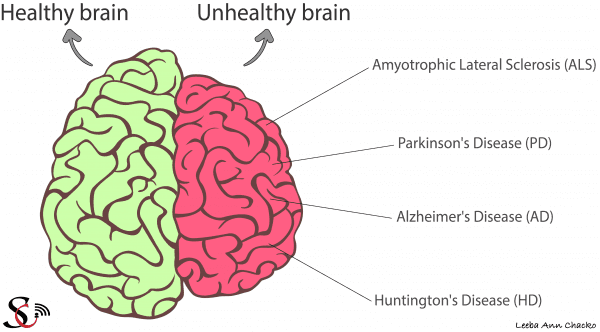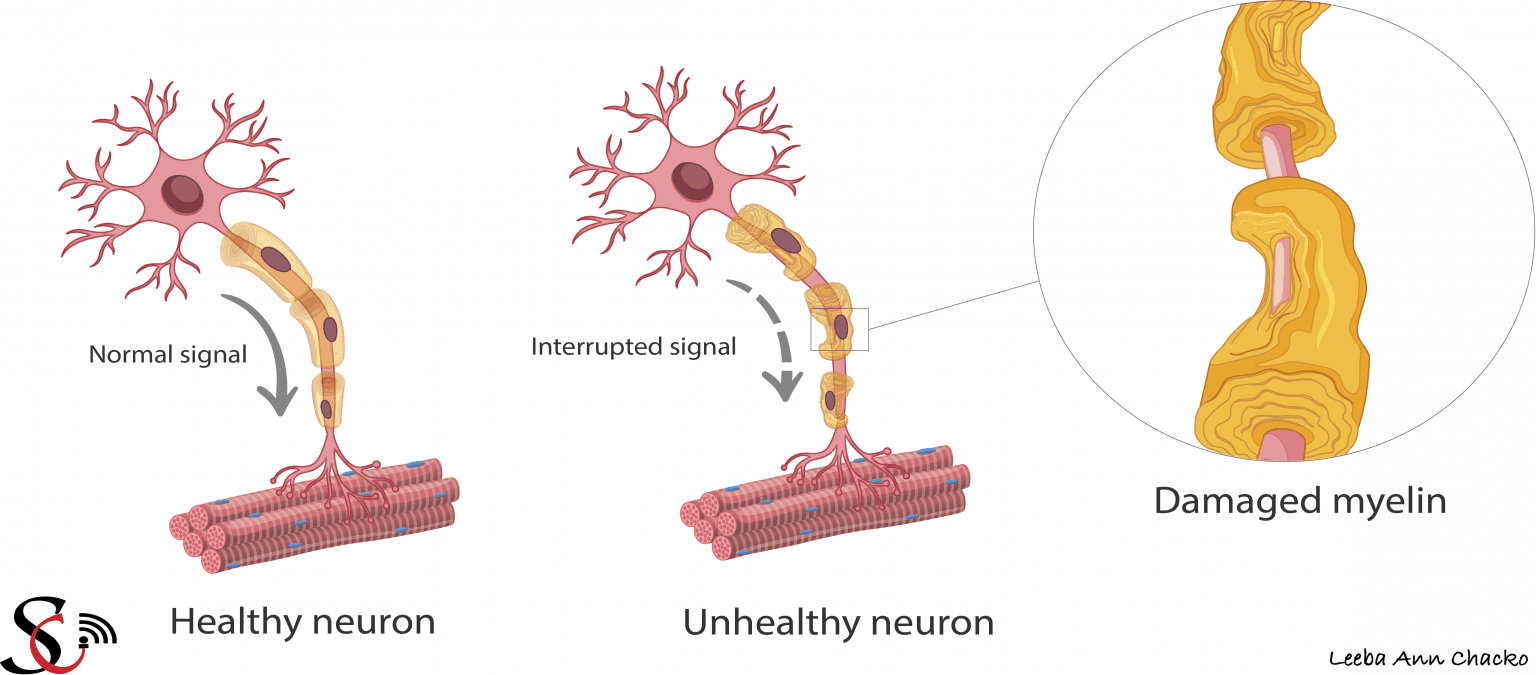
Joel P Joseph
In the previous article of this series, we understood the basic structure of a brain and why it is a “Wonder organ”. In this article, we shall understand how neurodegeneration occurs.
Brain is the signal processor of the Human Body.
As outlined in the previous article, neurons are like wires sending and receiving messages to and from different parts of the body using a combination of electrical signals and chemical neurotransmitters. Just as broken wires can cause a short circuit, degenerated neurons can affect our normal functions — memory, movement.
Neurodegeneration: what is it?
The term neurodegeneration comes from two words: neurons, meaning nerve cells, and degeneration, meaning deterioration or collapse. A group of diseases that are caused by the loss of structure or function, and ultimately the death, of neurons, is collectively termed as neurodegenerative diseases. Examples include Amyotrophic Lateral Sclerosis (ALS) — of which you may have heard, thanks to the Ice Bucket Challenge, Parkinson’s Disease (PD), Alzheimer’s Disease (AD), and Huntington’s Disease (HD).
Neurons normally don’t reproduce or replace themselves — although scientists have shown that some regions of the adult brain generate new neurons throughout life — so when they are damaged or die, they cannot be replaced by the body.
Unlike broken wires in a circuit that can quickly cause a spark, loss of neurons does not occur so fast that you can see the symptoms within a few days or weeks. Rather, it progresses slowly and takes several years for symptoms to appear. Neurodegenerative diseases are incurable and cause difficulty in movement (called ataxias) or mental functions (called dementias). They affect about one billion people worldwide and are predominantly seen among the elderly.

Certain neurodegenerative diseases cause brain atrophy, which is the loss of neurons which then leads to brain shrinkage.
How do the neurons degenerate?
Scientists have figured that neurodegenerative diseases are caused by a combination of genetic, biological and environmental factors. Environmental, biological, dietary, and lifestyle factors can trigger the mutations in the genes that can cause these diseases. While environmental factors include exposure to pesticides, metals, chemicals and pollutants in the air, biological factors are toxic proteins produced by bacteria. Dietary and lifestyle factors range from the food and beverages we consume — caffeine, antioxidants, tobacco, smoke, etc. — to our daily activities. All these factors together determine how vulnerable a person is to a neurodegenerative disease or how badly he/she would be affected by it.

Multiple Sclerosis (MS) is a neurodegenerative disease which impairs signalling in the neurons.
One of the major reasons for neurodegeneration is the aggregation of wrongly folded proteins. In any cell, normally, proteins that are synthesized are folded into particular shapes to perform their respective functions. Once their work is done, they are broken down by a specific set of proteins in the cell. The cell thus maintains a balance between the synthesis and degradation of proteins through its quality control machinery. In some instances, due to the influence of genetic, biological, environmental, and dietary factors, proteins are not folded or get folded into a wrong shape. Such proteins called unfolded or misfolded proteins, can form clumps in neurons and cause them to degenerate.
Summary
To sum it up, neurodegenerative diseases are a group of diseases that are caused by the loss of structure or function, and ultimately the death, of neurons. These are much like the broken wires in a circuit, which can cause the entire system to fail. Likewise, neurodegeneration affects the normal functioning of the human body including movement and memory.
This article is a part of the series on Neurodegeneration. Find the rest of the articles from this series here.
Illustrator: Leeba Ann Chacko
Edited by: দেবদত্ত পাল। Debdutta Paul





